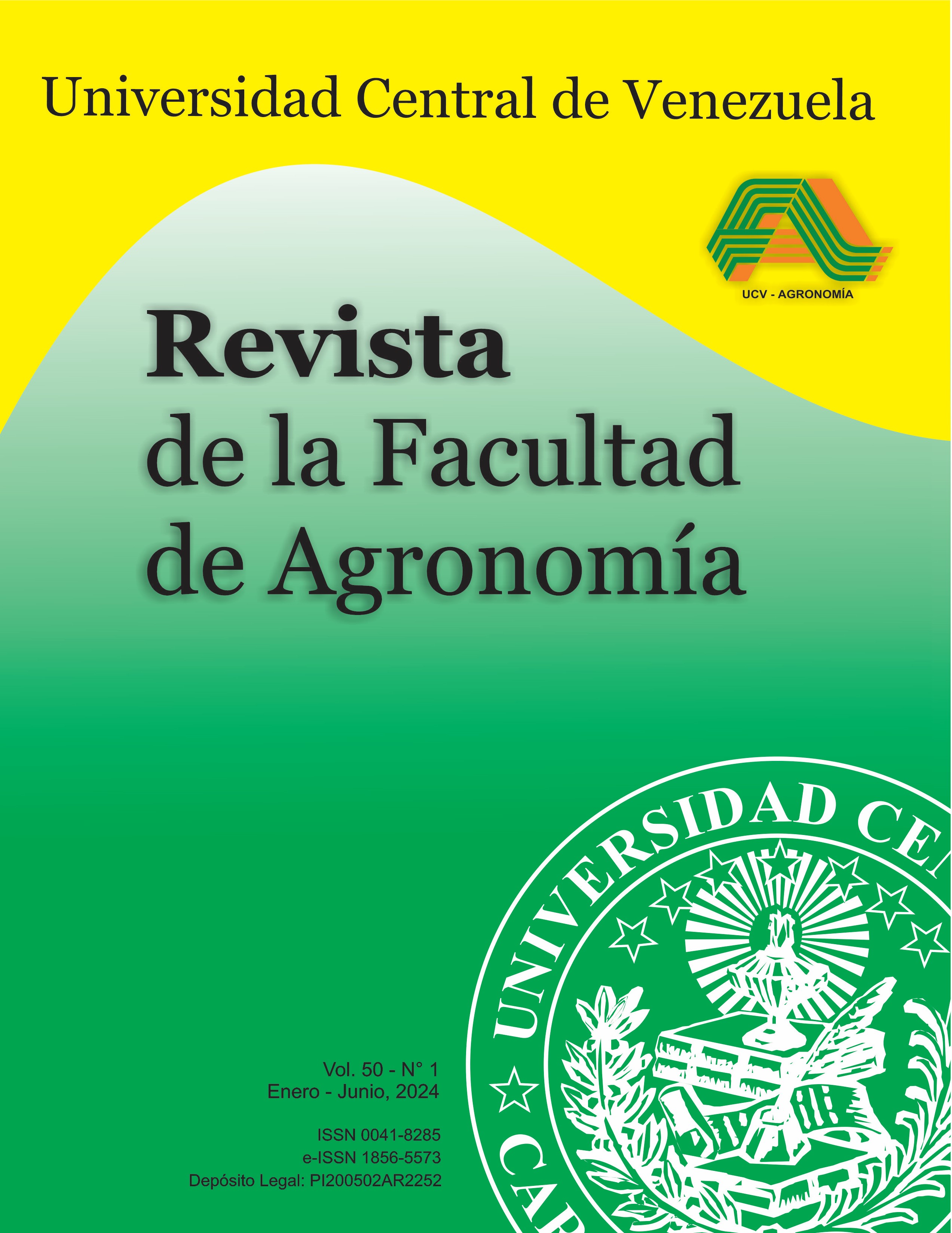Propiedades físicas del suelo y su relación con el rendimiento del cacao (Theobroma cacao L.) en Cuyagua, estado Aragua
Soil physical properties and its relationship with the yield of cocoa (Theobroma cacao L.) in Cuyagua, Aragua state
Palabras clave:
Agroecosistema tropical, análisis multivariado, variabilidad de suelos, limitaciones físicas, Tropical agroecosystem, multivariate analysis, soil quality, physical limitations.Resumen
Para evaluar la relación entre la variabilidad de las características físicas del suelo y el rendimiento del cultivo de cacao (Theobroma cacao L.), se llevó a cabo un estudio en la Hacienda Campesina Cuyagua, estado Aragua, la cual se dividió en dos lotes: un de mayor rendimiento (LA) y otro de menor rendimiento (LB). Se muestreo el suelo en un esquema radial en 4 puntos para cada lote (LA y LB), a dos profundidades (0-15 y 15-40 cm). En cada punto se tomaron muestras y se determinó en muestras disgregadas: contenido de agua (%H) y distribución de tamaño de partículas (DTP), y en muestras no alteradas: densidad aparente (Da), porosidad total (Pt), poros de aireación (Pa), poros de retención (Pr), conductividad hidráulica saturada (Ks) y módulo de ruptura (MR). En campo se determinó la resistencia mecánica a la penetración (RMP). Para evaluar la productividad se tomaron 5 plantas por punto y se contabilizó: número mazorcas/árbol (NM), número de semillas/mazorca (NSA), peso fresco de semillas/mazorca (PFS) y peso seco de semillas (PSS). Se calculó: índice de almendra (IA), índice de mazorca (IM) y rendimiento. Para el análisis de resultados se aplicó estadística descriptiva y multivariada. Las variables que permitieron la separación de los lotes fueron: Pr, contenidos de limo (L), arena media (am) y arena gruesa (ag). Se encontró una correlación positiva entre la productividad y variables como: Pt, Ks y algunas fracciones de arena; mientras que con Da, Pr, MR y el contenido de arena muy fina, la correlación fue negativa, especialmente en la capa subsuperficial. Las principales limitaciones físicas encontradas estuvieron relacionadas con la textura y el bajo contenido de materia orgánica, lo que le confiere baja retención de agua y nutrientes, por lo que la incorporación de materia orgánica humificada puede ser una opción para mejorar los rendimientos
ABSTRACT
With the purpose of evaluating the relationship between the variability of the soil physical characteristics, and the yield of the cocoa crop (Theobroma cacao L.), a study was carried out on a farm in Cuyagua, Aragua state, which was divided into two lots based on crop productivity: highest production lot (AL) and lowest production lot (BL). Soil sampling was carried out in a radial scheme at 4 sampling points for each lot (GL and BL), at two depths (0-15 and 15-40 cm). For laboratory determinations at each point, disaggregated samples were taken for moisture content (MC%), and size particle distribution (SPD), and unaltered for bulk density (BD), total porosity (TP), aeration pores (AP), retention pores (RP), saturated hydraulic conductivity (SHC) and modulus of rupture (MR). In the field, the mechanical resistance to penetration (MRP) was determined. To evaluate productivity, 5 plants were taken per point and the following were measured: number of ears per tree (NE), number of seeds per ear (NS), fresh weight of seeds per ear (FWS) and dry weight of seeds (DWS), and the following were calculated: almond index (IA), ear index (EI) and yield. Descriptive and multivariate statistics were applied to analyze the results. The variables that allow the separation of lots were Pr, silt (L), medium sand (ms), and coarse sand (cs) content. A positive correlation was found between some soil physical variables such as Pt, Ksat and some arena fractions, with crop productivity; however, with BD, RP, MR and very thin sand content, the correlation was negative, especially in the subsurface layer. The main physical limitations found in the plots are related to the texture and low content of organic matter, related to low water and nutrient retention, so the incorporation of humified organic matter can be an option to improve crop yields.





